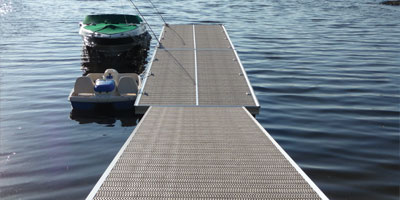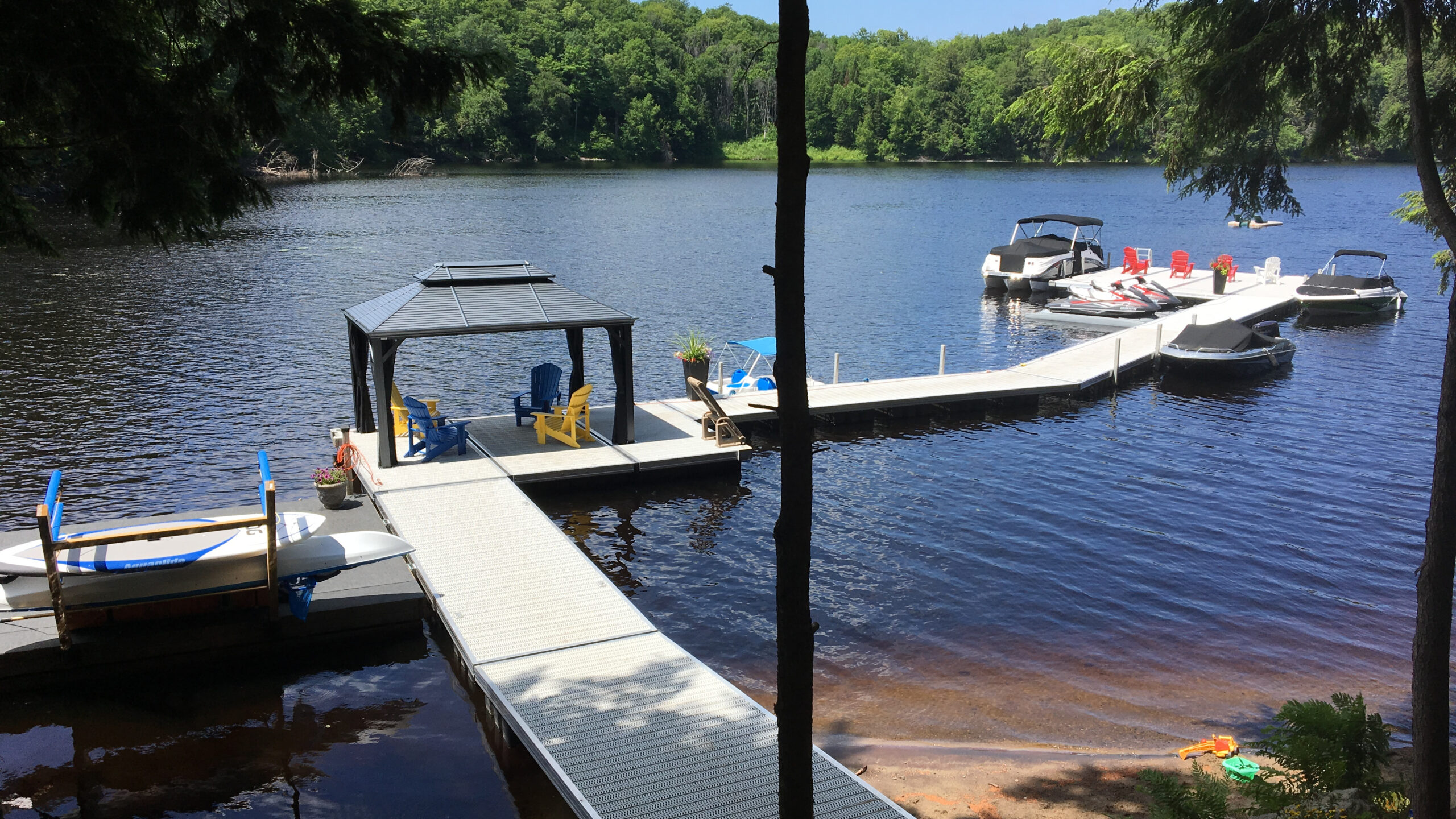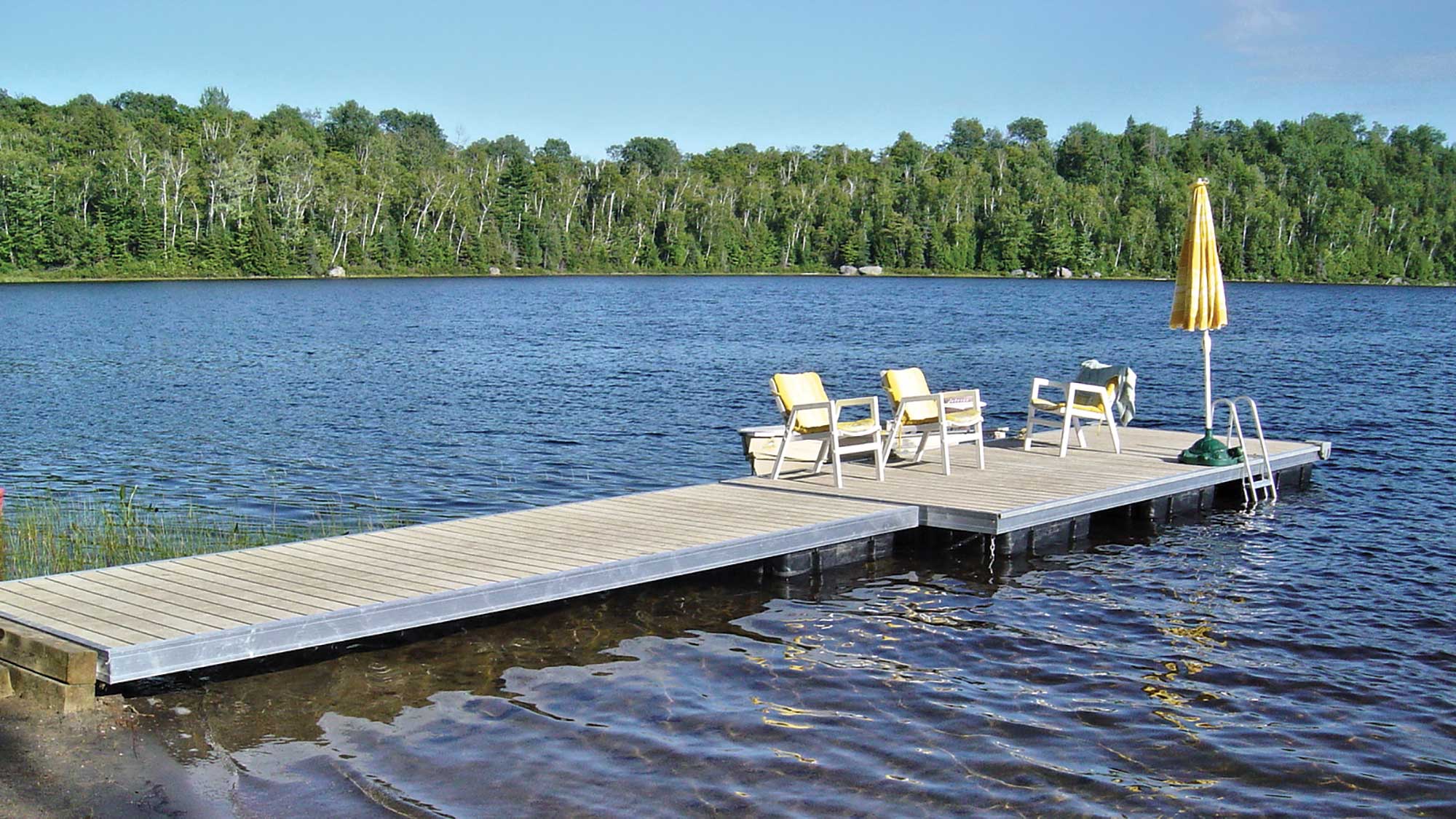What do I do with my dock in the winter?
Really it all depends on the type of dock you own. If it is a temporary style pipe dock it is recommended to be removed for the winter. If it is left in for the winter a few things can happen. The water in the tubes can crack the pipes when it freezes and expands. The Spring ice break up can shift or tear apart the dock. If a floating dock type is used and you’re not in an area where ice shift happens, then the standard protocol is to remove your ramp section for the winter and loosen the chains. If the floating dock can be made light enough (removing the decking) then moving the complete system out of the water and placing it in a safe area, away from where the ice can cause damage to the dock is a good idea. Another option would be to float the dock to a quiet bay.
Why are so many manufacturers moving away from wood decking?
Although wood decking has been a staple in docks for a long time the lower density and quality of new growth wood has led to the shift way from wood as a desirable decking choice. These new alternative decking solutions provide greater safety and generally have a longer life expectancy than wood product. They are lighter and easier to manage, more durable than wood and most of all require almost no maintenance.
What is the difference between Truss docks and Smooth Side Extrusion docks?
Truss docks are an older design of dock that has a good strength to weight ratio. In order to have an adequate structural torsional rigidity it does require a high frame height and excessive diagonal bracing. To hide the truss look, many manufacturers attach a clad wood or composite to the frame making it more attractive but also considerably heavier and therefore less manageable. Modern hollow or multi-chambered smooth sided extrusion docks are much lighter (manageable) and have a cosmetically attractive appearance while having an excellent torsional rigidity in some cases without the use of cross bracing. Although the truss design is less desirable now, it has been produced for a very long time and manufacturers of these docks continue production for existing customers who are looking for replacement sections. This why some manufacturers have multiple design styles of pipe docks to choose from.









